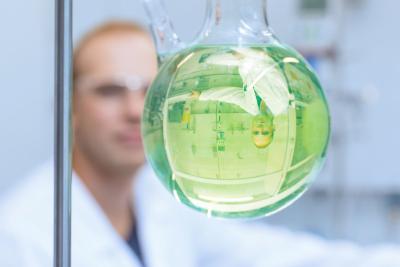The following is a sponsored post by Novaled
Novaled is a leading provider of proprietary organic materials and complementary innovative technologies for superior OLEDs in display and lighting and for high performance Organic Solar Cells (OSC). Being active in the field of organic electronics, Novaled's skill set is quite unique, combining expertise in physics, chemistry and engineering support. Headquartered in Dresden/Germany, Novaled has also some business and technical presence in Asia. In 2013, Novaled has become part of the Samsung Group.

Milestones in the history of Novaled
Novaled is a former start-up, founded in 2001 as a spin-off from the Technical University of Dresden and the Fraunhofer Institute. After a phase of extensive research and development, from 2006, our materials could be tested by display manufacturers, and successfully made their way into Samsung's mass production right from the start in 2010. Initially, Samsung was the only producer of OLEDs - organic light-emitting diodes.
When Samsung selected our products, it was a proof of their quality and efficiency. For obvious reasons Samsung kept an eye on Novaled and eventually acquired the company in 2013. The integration process into Samsung Group required some efforts at the beginning, but it came together smoothly within a few years. The Group has granted us a high degree of freedom right from the very beginning.
Of course, long-term strategies are being coordinated. However, as far as business is concerned, we are free to sell our products also to competitors in Korea and China. This is one of the reasons for our success, along with the fact that we focused on internationalization at a very early stage. We have grown much further than we could imagine. The organic doping technology, especially the p-type doping is the solid foundation of Novaled’s success.

Today’s company position
Novaled holds a twofold product offer: On the one hand: materials used for OLED production. Research, development and small scale production up to 20 kg take place in Dresden; while upscaled mass production is outsourced. On the other hand our patents are licensed accordingly. We operate one office each in Korea and China to serve these huge markets close to our customers. Most of the time, we have grown even more dynamically than the market. In 2005, our annual revenue was half a million EUR; in 2019, we reached 109 million EUR.
Novaled has now grown from just three employees in the beginning to almost 150. About 60 to 70% of our staff hold an academic degree and about a third have a PhD degree, meaning that the overall level of education is remarkably high. That is relevant because research and development accounts for about 85% of the company - the very heart and soul of Novaled. We see ourselves as an international company and employ people from 14 different nations.
Doping in brilliant OLED displays
Currently, OLEDs are mainly used in displays for mobile phones, tablets, laptops and televisions. They consist of around 14 to 20 layers, sometimes even more. We are striving to make the materials more and more efficient and to obtain more and more layers within our core competencies. Novaled offers an additional range of electron transport materials for various AMOLED applications, from very small to very large, from wearables to mobile to TV.
New interesting and innovative markets
Organic photovoltaics could become a new, very interesting market for us. We are already making strategic preparations for this. Also OLEDs will find their way into more and more products, including the automotive sector. The form factor of displays, i.e. their potential bendability and foldability, will also provide new possibilities. Recent years have shown a very dynamic growth in China. We expect furthermore that AMOLED TV will grow strong in the near future, both by Chinese players entering the market as well as through Samsung’s market entry with QD-AMOLED TV.
